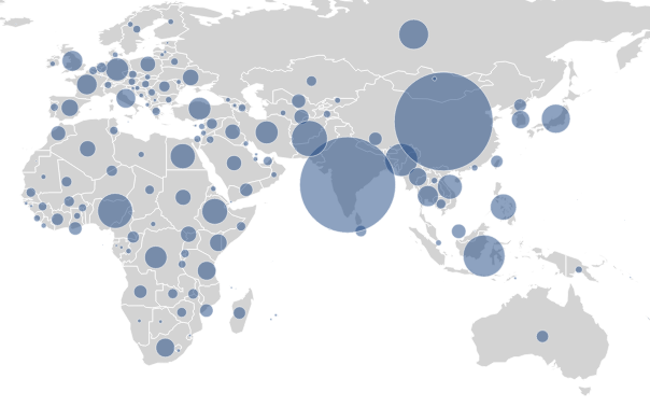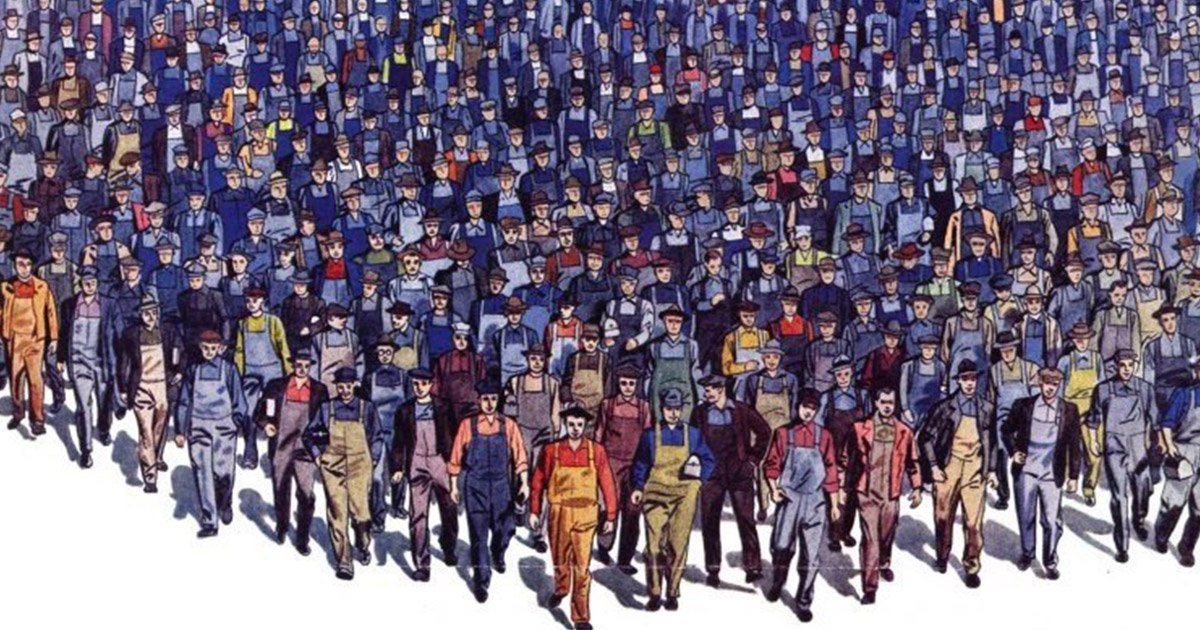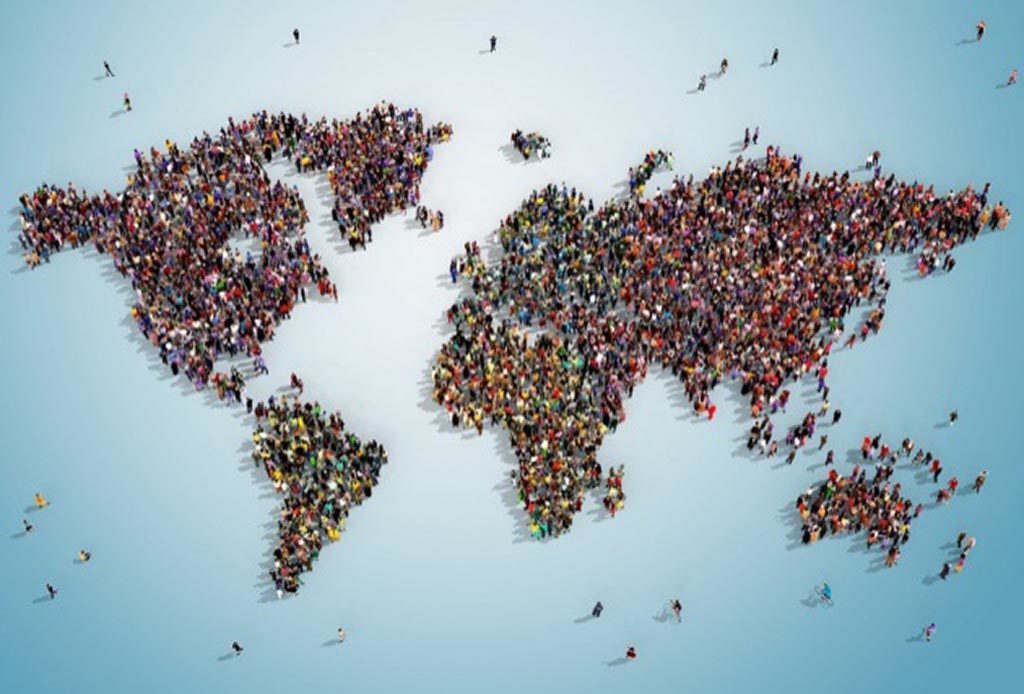The world population is continuosly growing. An exponential dizzying growth. We passed the limit of the two billions less than a century ago, in the 1927. At the end of the century we were 6 billions. And today the world population is something about 7 billions and 800 millions of people. The dreaded limit of the 10 billions of people is expected it will be reached for the ’50s of the twenty-first century. The growth unstoppable. Since the age of the black plague, in the fourteenth century, it always grown, without a setback or a sign of de-growth. However the experts say that we can soon see a setback.
The world population growth since now to the 2100 – Prospect number one
Today we are 7 billions and 800 millions of people. With an exponential growth that is hard to imagine. To see it black on white it surely makes an impression. It is possible to follow the demographic development, and not only, on the worldometers.

The experts claims that, except for unforseen circumstances (the Covid-19 didn’t absoluty stopped the demographic growth), in the 2050 we will be about 9.7 billions. An increase of two billions of people in only 30 years. If we think that the human population needed many milleniums, since the beginning of the human civilization up to the middle of the twenty century, to reach the first two billions, this is really incredible.
Then, we will need, maybe, just a couple of years to add the 300 millions of people that will bring us to the limit of the 10 billions. Until to reach, finally, the unbelievable amount of 11 billions of people. From here on out, according to the experts, the world population might have a setback and then start to decrease.
The world population growth since now to the 2100 – Prospect number two
Recentelly, by the way, that prospect was revised and the deadline lightly increased. It seems, infact, that the such waited setback will arrive before.
The new datas fixed on the 2064, and not any more at the 2050, the reaching of the 9.7 billions of people. We will need, so, not 30 years any more, but more than 40 years, to increase the world population of two billions. And it will be at this point, always according to the new prospect, that we will have the setback and the world population will start to decrease, at not any more in the 2100.
At the end of the century, so, we won’t be 11 billions anymore, but “only” 8.8.
According to this new prospect we will never arrive to count 10 billions of human beings on the planet Earth. But which one of the two prospects will be the real one?
Why is the limit of the 10 billions scary
According to the prospect number two we will never reach the limit of the 10 billions. And this maybe makes us sad, we will never be able to say “There are 10 billions of human being on the planet Earth”. But in reality this should make us breathe a sigh of relief.

According to the experts 10 billions, with the current consumptions, is the maximum number of human beings that the Earth can support. Besides which we will start to have many severe problems.
Sure 10 billions is a noticeable number, we reach a figure, we add a zero, but this doesn’t mean that at 9 billions and half we won’t have any problem.
Firstly we won’t have enough food. To make 10 billions of people eat we will need two whole continents, to cultivate and for raise (if the resources are equally divided, obviusly). But to make things worse there will be, obviusly, the pollution and the climate change, which will make arid zones larger, by further reducing the farm land.
Why will the setback be anticipated of almost 40 years
According to the scenario number two we will have the setback in the 2064 and we will never reach the limit of 10 billions of people. But what’s the reason of this change?
The births are drastically decreasing. Think that in the 2016 we recorded for the first time in the history a higher number of over 65 compared with children under the age of five.
The world fertility rate, therefore, drastically decreases too, in the ’50s it was of 4,7 sons, in the 1990 it was 3,2 births per woman, while in the 2019 it was 2,5 and it is expected that, in the 2050, it will decrease again, by arriving at 2,2 births per woman.
When the rate will arrive at 2,1 the world populaton will start to decrease.
The fertility rate, obviusly, has very different numbers according to the area of the world that we are going to examinate. In the 2019 in Italy this rate was 1,29, while in the Subsahara Africa, the rate is, still today, 4,7.
With a policy focused to rebalance the inequalities we can try to make the rate closer and to solve the problem of the overpopulation in many of the poorest countries, that they are suffering of it already today, like in India, which counts more than 1 billion and 300 millions of people, most of them completely poor. Or the China that at the moment is the most populated one, with 1 billion and half people.
This post is also available in:

